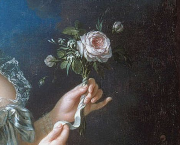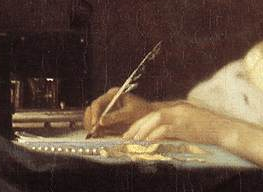From Revolt into Servitude : The Conflict Between Noble and King in Molière’s Amphitryon
William O. Goode
Goode, William O., "From Revolt into Servitude : The Conflict Between Noble and King in Molière’s Amphitryon", dans Cahiers du XVIIe siècle, 2003, vol. VIII, 2, p. 33-42.
Extrait de l’article
The long-standing conflict between the French king and nobles culminated with Louis XIV in the seventeenth century when the feudal warrior class lost its independence and took on a new identity as court nobility dependent upon the monarch. In light of Molière’s close association with Louis and his court, it is not surprising that this incursion upon traditional noble identity in favor of the king appears at the heart of one of the playwright’s comedies. This is Amphitryon, in which, as I intend to demonstrate, the eponymous hero, a victorious Theban general — “des Thébains le glorieux appui” (III, v, 1657), represents the feudal nobleman as warrior and in which Jupiter represents Louis. Critics have long suggested an analogy between Molière’s Jupiter, the “souverain des dieux” (Pro., 34) and Louis XIV, but they have usually read this in terms of the latter’s amorous pursuit of Mme de Montespan. I would argue, however, that Molière uses Jupiter’s pursuit of Alcmène and the god’s usurpation of Amphitryon’s identity to reflect a much more significant aspect of contemporary life than the monarch as adulterous lover. Indeed, Jupiter’s deliberate invasion of the warrior-aristocrat’s identity endows Molière’s comedy with a historical/sociological subtext, a meditation upon the process by which Louis XIV was subduing the French nobility and turning them into courtiers at the mercy of his authority, a process that the playwright was witnessing personally at court festivities in which he and his troupe participated. The vast separation between Molière’s trickster gods and deceived mortals in this play serves, then, to reflect what Elias calls the new “balance of forces” between Louis XIV and the noble class, where “between him [Louis] and the rest of the nobility there was now an immense distance”.
Lire la suite (Société d’études pluridisciplinaires du dix-septième français)




